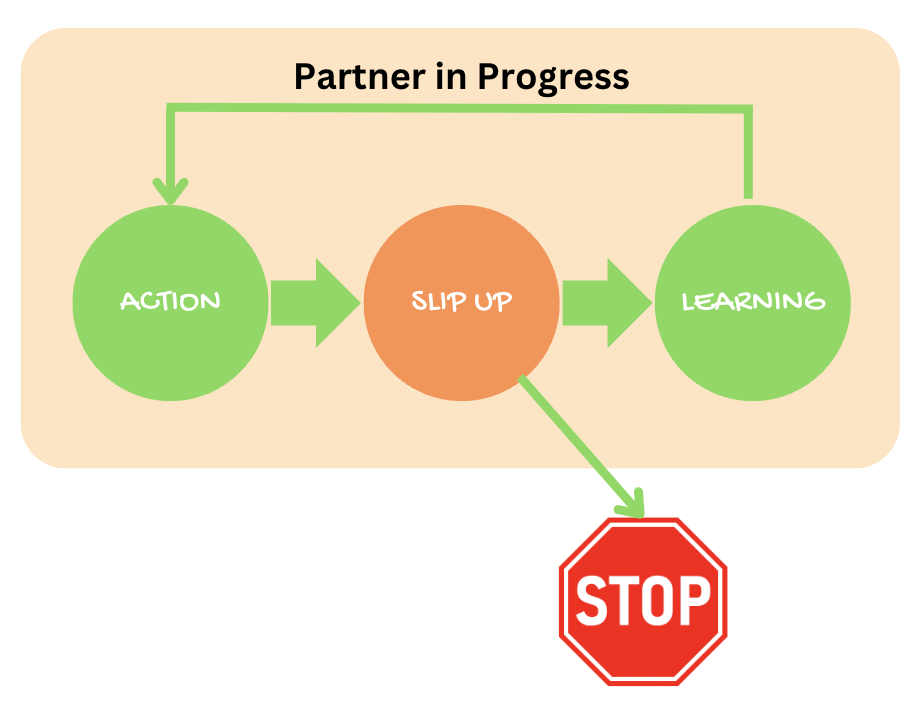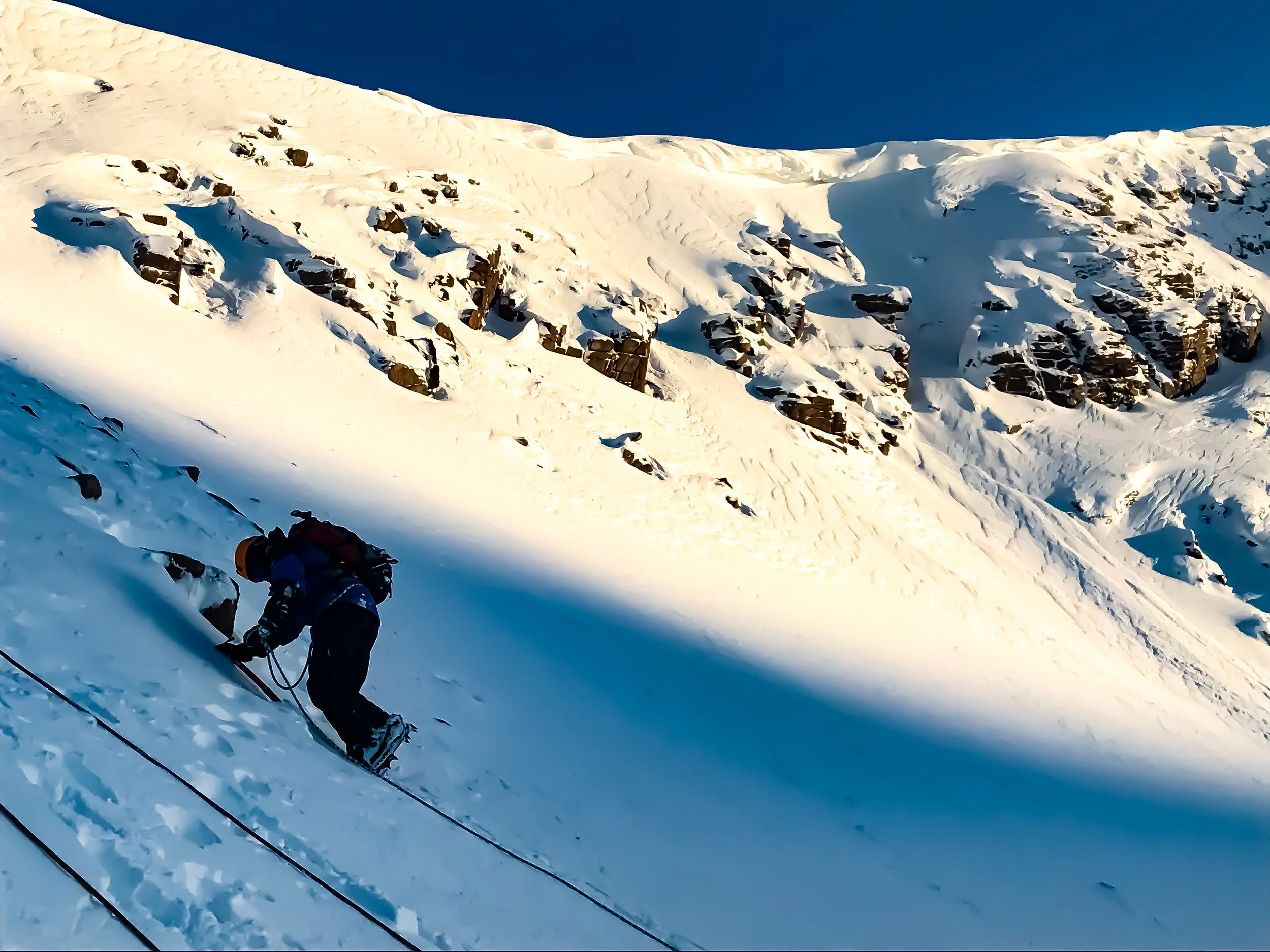Problem Solving for Adventure Professionals
If you think that your job as an Adventure Professional is just instructing and / or guiding clients in the outdoors, then you’re missing some major opportunities. There is much more to your abilities than that.
Your job as an instructor / guide / coach / leader is, foundationally, about helping people. You are helping people attain a much desired goal, either by directly leading to the achievement, or teaching them how to achieve it themselves. As with moat people striving towards a goal ,there is usually a problem in the way that must be overcome.
Now, because every client is unique, the programme and course structure that you design for them should be tailored to suit. Clearly, this is difficult when running open courses that can have a variety of clients attending but let’s focus on closed courses, tailorable programmes and professional mentoring for now.
For the most part, tailoring our products to match our clientele is a simple task, but problems can arise that need to be addressed and modifications often need to be made. A clear mark of a quality Adventure Professional is the ability to evaluate and adjust, to problem solve, in order to ensure the quality of the product remains high.
Don’t worry about sounding professional. Sound like you. There are over 1.5 billion websites out there, but your story is what’s going to separate this one from the rest. If you read the words back and don’t hear your own voice in your head, that’s a good sign you still have more work to do.
Be clear, be confident and don’t overthink it. The beauty of your story is that it’s going to continue to evolve and your site can evolve with it. Your goal should be to make it feel right for right now. Later will take care of itself. It always does.
Without us having well-developed and practiced Problem Solving skills, our clients will struggle.
So, in this article we’ll cover:
What problem solving is
Why Problem Solving is important for Adventure Professionals
Whether or not Problem Solving works
The 5 key steps to effective Problem Solving
What is Problem Solving?
We use the phrase “problem solving” a lot, both in the Adventure Industry and in normal life. Although these are relevant phrases being used, when we talk about Problem Solving in the capacity of a professional skill, we are referring to specific behavioural change techniques.
Problem Solving is one of the behavioural change techniques we use in a lot of our programmes. It is effectively identifying, addressing and solving problems as they arise.
This applies to us as Adventure Professionals in two major ways, how we solve problems ourselves, and as a technique or intervention we teach clients the process of effective Problem Solving and then help them to apply it to the different problems they are likely to encounter.
For example, when done within the Adventure Professional programme, we might help a professional identify the factors that cause them to experience significant levels of anxiety when attending a professional assessment. Once identified, we might then help them to identify and implement a solution that results in an assessment process being easier or calmer. Perhaps an Adventure Professional is experiencing a level of imposter syndrome, or having issues with balancing work and home life. Perhaps anxiety is stifling performance. There are many problems that Adventure Professionals tend to encounter along their professional journey that can be identified and addressed. Your clients will experience similar issues that, although they may be more relevant to performance effect than professional effect, are still issues that can be identified and addressed.
When it comes to our clients in the adventure industry, teaching them “how to do the thing” is often not enough to further their journey to being autonomously independent. It is often a useful and effective technique to discover what is standing in their way of being autonomously independent, and help your client to overcome these. After all, if we can only achieve autonomy in our clients when they are in our company, we are not being effective!
“A problem shared is a problem halved”
When it comes to helping a client, problem solving is a shared process. Many Adventure Professionals avoid this process in the mistaken belief that they, the professional, are responsible for solving the problems of others for them.
This is not the case. The responsibility of problem solving fundamentally lies with the person for whom the problem is a struggle. Your role, as the Adventure Professional, is to aid in the development of your clients’ problem solving skills, so they are equipped to do the solving themselves.
On a cognitive level, being capable of the decision to solve a problem, rather than accept or wallow in it, shifts the person’s perception of control from the external to the internal. That is, from a view that it is factors outside of their control, to one that it is factors they can control. This ultimately leads to increased self-efficacy.
This is possibly best explained by Chinese philosopher Lao Tau:
“If you give a man a fish, you feed him for a day. If you teach a man a fish, you feed him for a lifetime.”
This means that if we solve another persons problems, we aren’t really helping. If anything, we are actually crippling them for later on, as when a problem arises they will not be able to overcome it themselves. But: if we help and teach them to solve their own problems, we are equipping them with the skills to solve problems in the future, on their own.
Why is Problem Solving important for Adventure Professionals?
It’s easy to consider this as not your issue. That your client’s issues are there’s alone, and your job is to simply teach them skills in their chosen activity. I would counter this, by arguing that the role of an Adventure Professional is much, much more. You are tasked and entrusted with introducing people to the world of adventure. Where you are teaching climbing, paddling, biking, mountaineering skills or similar, you are the link between the old version of them, who wanted to be a climber / paddler / mountaineer etc and the new version, that is. You will be forever remembered as the person that taught them the skills they needed. If, as an adventure professional, you consider your role to simply be teaching hard skills then you are missing the point. You are also missing significant opportunities for ongoing revenue generation.
In a previous article “How to stay Motivated,” we discussed how motivation drops after the initial period of involvement, so the motivation to partake in an activity, to to practice an important skill wanes significantly.
This can be relevant for any adventure participant practising, preparing or taking part in their chosen ventures. But: it is aptly demonstrated in those preparing for a professional assessment. Motivation is generally high after a training course, but as time goes on, as practice becomes repetitive, motivation decreases. A question worth considering as Adventure Professionals is how to address this problem, as trainers, mentors and as a community?
As motivation drops, the barriers that once didn’t seem so hard to overcome when motivation was high start to look bigger. We know as professionals that barriers are simply problems that can be addressed. This can range from quite simple things such as a timetabling or time manager issue, to something more difficult such as forgetting how to perform a particular skill, or something more nuanced such as feelings of low self worth or confidence creeping in.
One issue here is that we often relate a client’s failure to perform or to complete a task as “their problem.” If they had tried harder, if they had prepared better, if they had been better and so on. We tend to link failure to effort, discipline or character. This is so often inaccurate and unfair. But as long as we link failure to personal characteristics, we ourselves are failing our clients. All because a reasonably simple and fundamental skill isn’t being taught. How to solve the problem.
When should Problem Solving be used?
The best time to use Problem Solving is before problems manifest! We devote a lot of time on this on The Adventure Professional programme, for good reason.
By gathering information about a client’s goals, history, preferences, abilities and availability we can tailor our course offering, and teaching content to each clients unique needs, wants and circumstances. By scheduling a review session(s), we can solve problems with our clients to ensure their ongoing forward progress.
It is very common in the adventure industry to see learn to climb / learn to kayak / learn to mountain bike type-courses, at all available levels, essentially being delivered the same regardless of client. Sure, we pretend to tailor them by talking about learning styles or similar, but we are applying our spectrum of learning and knowledge to the client, in order to move them along this spectrum, when we should first be discovering the clients own spectrum of learning and knowledge, and moving them along this. If we apply the same linear progression to all clients, with the only difference being their starting point on the line, we are misunderstanding how people learn, and how to teach them.
When we observe and recognise a client’s own spectrum of learning and knowledge, beginning after our initial consultation, lets then build in the expectation that slip ups will occur.
Adventure Professionals prepare for slip ups. They reflect and learn and then readjust. This process relies on structure and skills. We want to ensure that slipping does not result in people disengaging from the programme / process, or even activity altogether.
Expect problems; prepare and learn from them.
Regardless of how good we are at predicting and addressing problems, they will likely still arise at some point. As such, the second best time to use Problem Solving, is when a problem is in front of your face! This is usually a mixed lesson, equipment issue or a client is not enjoying your course, or does not gel with you. These are signs of problems that, if left unaddressed, will result in the client stopping.
Once these problems are recognised, prompt action is needed to reengage the client, to find out what the problem is and help the client to solve it.
Problems are more likely to occur early a clients journey than later which is why drop out rates are so high in beginners and early-stage instructors. This would suggest that professional mentors are more needed in the early stages than the latter.
Does Problem Solving work?
If an unresolved or unaddressed problem results in someone disengaging, then surely Problem Solving must be effective…? On a logical and rational level, we would assume this to be true. But, as a professional, rather than assume anything, we check things against the research.
Because we are talking about Problem Solving as behavioural intervention, there is a lot of research in the psychological sphere. Deficits in problem solving skills have been linked to a host of psychological conditions including depression and anxiety, as well as the ability to cope with chronic illnesses such as diabetes.
Problem Solving Therapy (PST) focusses on specific problem solving skills and has proven beneficial in a wide variety of contexts.
Looking at our role within the Adventure Professional programme, lots of members want to improve their overall health, fitness, and make some change physically (generally weight loss, muscle gain or strength gain). Murawski investigated the relationship between problem solving, treatment adherence and weight loss outcomes. A study, in which 272 women participated, consisted of a 6 month lifestyle change for obesity. 50% of participants were assigned to conventional treatment, the other 50% received the conventional treatment as well as Problem Solving Therapy.
The study found:
On average, participants lost 8.8% of their bodyweight
Weight loss was associated with improvements in Problem Solving skills
Those who lost the most weight demonstrated the greatest improvement in Problem Solving skills.
The authors concluded that that improvements in Problem Solving Skills enable participants to overcome barriers to adherence and thereby, enhanced treatment induced weight loss.
From our perspective, Problem Solving Skills enhancing treatment adherence is a key piece of knowledge!
What are the steps to effective Problem Solving?
The study mentioned above used a five step model, so let’s look at this.
Identify the problem
Identify all possible solutions
Choose the best solution
Prepare to implement the solution
Implement and review the solution’s effectiveness
Like all behavioural intervention techniques, it is most effective when the steps are completed methodically.
When teaching this to our clients as Adventure Professionals, we would work through each of the steps a number of times before expecting the client to independently capable of the process.
Identify the problem
Problems can be easy to identify at times, other times not. A mentoring client who has m missed the last few sessions of scheduled practice / training might give a vague description:
“I just don’t think its going to work”
“There’s some stuff going on”
“I’m finding it hard at the moment.”
We also call these “Simple Deletions.” At first they seem quite complicated as the client isn’t giving you much to go on. But that’s ok, it just means there information to find. We need to ask open ended questions (bear in mind that this process can work internally for yourself).
What don’t you think will work, why don’t you think it will?
What stuff has been going on?
Can you you tell me what you’re finding hard?
Bear in mind that, in a mentoring role, Comparative Deletions are very common in the adventure industry. These are things like “I’m not as good as Joe.” And so on.
Make sure you are doing your best to ensure the client feels comfortable discussing the issue. This generally takes the form of reassurance:
Most people struggle with this kind of programme at some stage
They won’t offend you if they want to change their programme or try something different
Most problems have ghost of different solutions that can be explored
The development of your soft skills as an Adventure Professional is crucial here. The problem solving process requires a strong and respectful relationship between you and your client. Rapport building, listing skills, consultation, planning, goal setting are all skills you need to be well developed in for this process to work.
2. Identify all possible solutions
Encourage the client to think of as many solutions as possible. It doesn’t matter at this stage if they consider them to be good or bad solutions. Suggest some for the list yourself (but always a few, because only suggesting one may lead to the client considering that to be the “recommended” one).
If they are struggling with this process, some suggestion you could give include:
View the problem as an outsider, what would X do in this situation?
Think of solutions that may have worked int he past, or for similar issues they have encountered.
Of course, if there are obvious solutions that they have not considered, add these to the list.
3. Choose the best solution
Review the list of solutions and have the client pick the one they think is best. Some will find this a simple process and some may need guided through a shortlisting process first, to then enable a choice of one solution.
Eliminate the least practical solutions first and consider the ups/downs pros/cons of the remaining solutions. List these, those with greatest benefits and lowest risks at the top, to lowest benefits, greatest risks at the bottom. Remember than more than one solution could be merged to get the best option overall.
4. Prepare to implement the solution
The proposed solution may be be easy, or a quick fix. It may require preparation. Preparation usually consists of:
Identify resources required
Identify potential obstacles, and ways to overcome
Once the preparation has been completed…
5. Implement and review solutions effectiveness
Put the plan into action! Both the client and you could keep tabs on whether it is working or not. If it’s not being effective, it is not only a waste of time, but may be ingraining negative habits that will cause further problems down the road. If it is only partially working, it needs to be reviewed. Encourage the client to consider:
Why the solution isn’t working
How it can be adjusted to be more effective
If an alternative solution needs to be considered
Problem Solving is learning process. Sometimes its doesn’t work. But: the learning that supports the process will help develop the skills and thought process necessary to solve problems more effectively in the future.
Helping your clients to develop effectiveness and efficient Problem Solving Skills is a fundamental part of any personal development.
Don’t forget about you
As an Adventure Professional, Problem Solving skills are incredibly important. We all need to review our practices and actions as professionals and identify problems, or potential problems that will rise barriers to our progress.
We all know the old, yet sadly still relevant, story of the trainer or assessor actually causing problems for their client and believing that they needed to be pushed harder, literally creating reasons for them to quit. We need to recognise that a lack of enjoyment (and therefore compromised learning) is a problem in our field. We must pay attention to what are clients are telling us (this isn’t just verbal). If things are not going well, ask, listen ad act upon the answers.
We may know a lot about our chosen field, but our clients know themselves much better than we do.
References
1. Murawski et al. (2009). Problem solving, treatment adherence, and weight-loss outcome among women participating in lifestyle treatment for obesity. Eating Behaviors: An International Journal, 10(3), 146-151. https://doi.org/10.1016/j.eatbeh.2009.03.005








